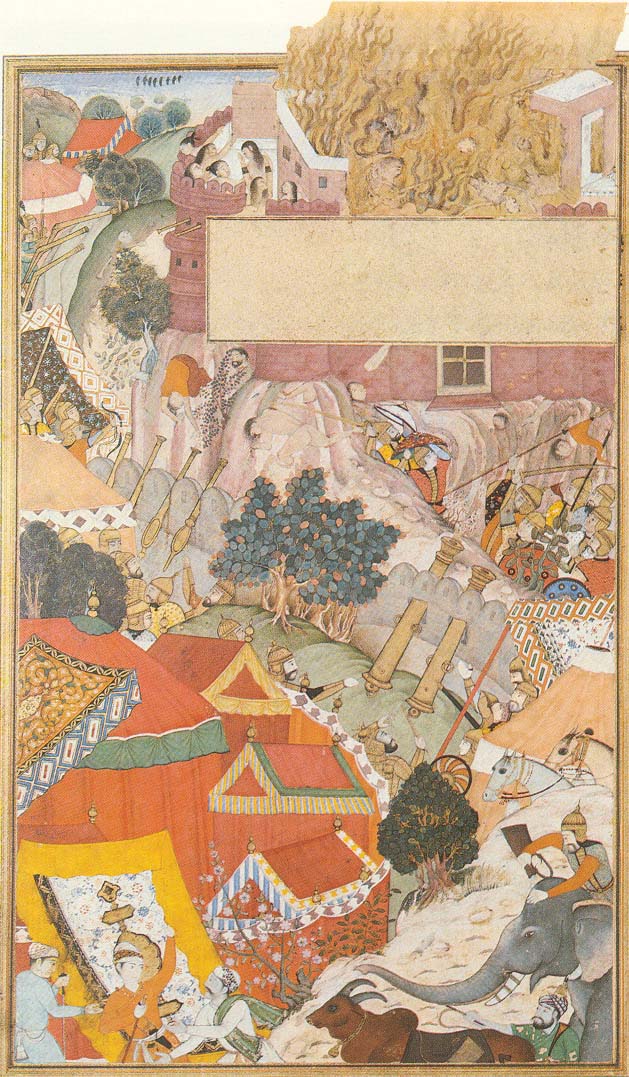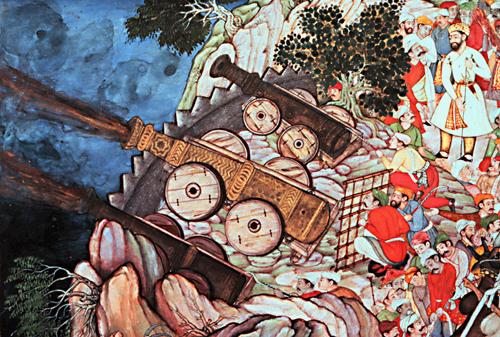

Rajput women commit (?) johar after the siege of Chitor, 1567
Source: Gulbadan: Portrait of a Rose Princess at the Mughal Court, by Rumer Godden (New York: The Viking Press, 1980), p. 119. Scan by FWP, Sept. 2001.
"Miniature from the Victoria & Albert Museum Akbar-nama, c. 1590 (I.S. 2-1896, 69/117). The immolation of the Rajput women after the siege of Chitor in 1567." (Gulbadan p. 156)
FROM THE AKBAR-NAMA:
"Just at the same time fire broke out at several places in the fort. The courtiers had various ideas about this, but Rajah Bhagwant Das represented that the fire was the johar. For it is an Indian custom that when such a calamity has occurred a pile is made of sandalwood, aloes, etc., as large as possible, and to add to this dry firewood and oil. Then they leave hardhearted confidants in charge of their women. As soon as it is certain that there has been a defeat and that the men have been killed, these stubborn ones reduce the innocent women to ashes....As many as three hundred women were burnt in the destructive fire of those refractory men." --Akbarnama, trans. H. Beveridge, vol. 2, Ch. 65, p. 472.Note that the besiegers have been using cannons. There is a clearer depiction of them below.

Detail of the attack on Chitor, from the Akbar-namah.
Source: Courtesy of Prof. Frederick Asher, Univ. of Minnesota,
October 1999
== Indian Routes index == Indian Routes sitemap == Glossary == FWP's main page ==